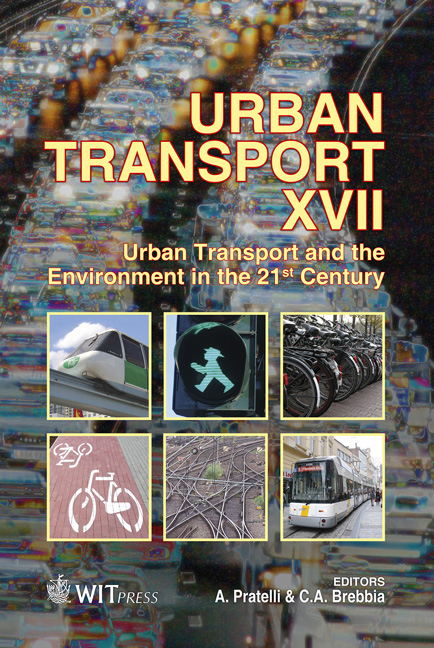A Logical Approach For Geo-coding And Minimizing Noise In The Spatial Data Of Public Bus Services In Urban Areas
Price
Free (open access)
Transaction
Volume
116
Pages
12
Page Range
263 - 274
Published
2011
Size
3,404 kb
Paper DOI
10.2495/UT110231
Copyright
WIT Press
Author(s)
Y. E. Hawas, M. B. Khan, N. Basu & K. Ahmed
Abstract
A more efficient public transit system means better accessibility and higher opportunities for better economy. To enhance the operation or to provide a better transit service, it is essential to draw a clear picture of the baseline conditions to identify the pros and cons of the existing service. Developing a quantitative spatial database of the service characteristics is deemed necessary for detailed analyses of existing services. Spatial database may help in understanding the geographical extent of the services and identifying the areas that may need special considerations to enhance the services. In this paper, a logical approach is presented to geo-code the spatial data of the public bus services; namely, the stoppage and routes maps (layers). The used geo-data data to develop the bus stops and routes’ layers have significant noises. The adopted methodology to filter such noise in data and to develop the spatial database is presented in details. Analyses and conclusions were presented using the presented GIS spatial data techniques. Keywords: geo-coding, noisy data, public transport. 1 Introduction A public transit system is an essential part of urban life. It provides an important option that can cut through the congestion and provide access to the job market. Public transportation services provide a link to connect suburban job facilities as well as the job market in the urban core with employees. Thus it has become an
Keywords
geo-coding, noisy data, public transport





